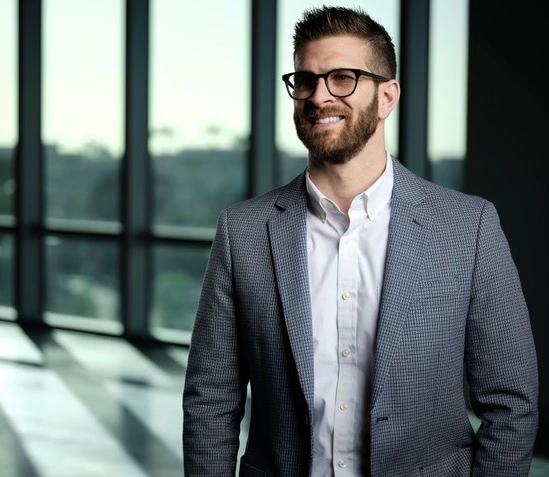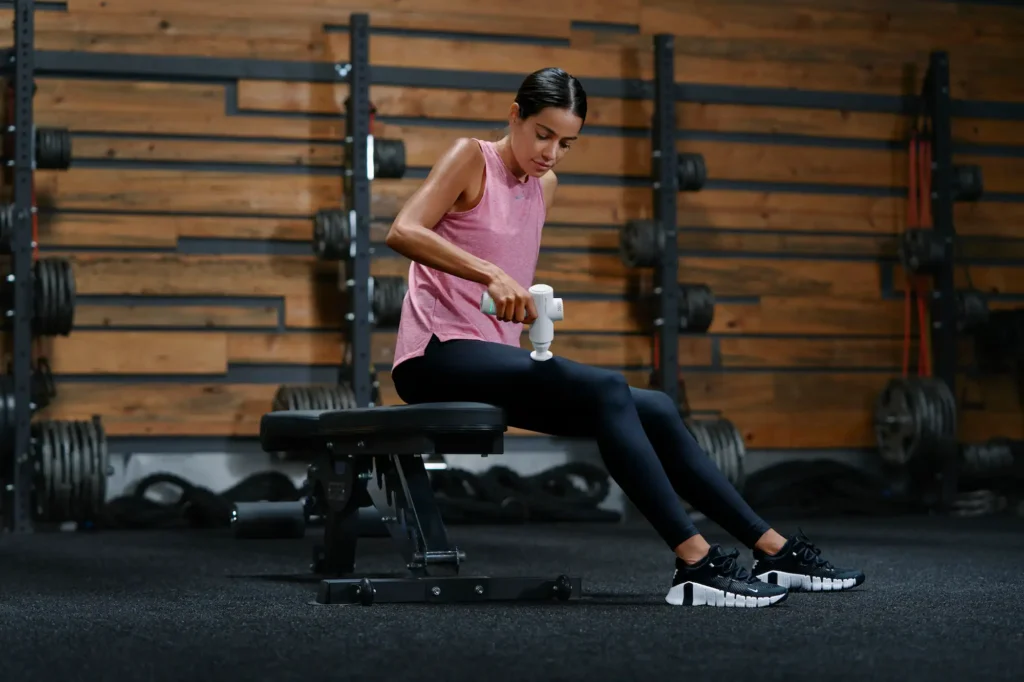Hyperice CEO on the Future of Recovery, How Gyms Can ‘Elevate’ the Member Experience

Jim Huether believes recovery rooms will become standard inside fitness facilities as gyms look to keep members healthy and happy
Founded in 2011, Hyperice is one of the pioneers and leaders of the rapidly growing recovery space. The recovery technology company’s products can be seen on the sidelines of the biggest sports leagues in the world, in fitness facilities and wellness studios, and in the homes of athletes and everyday consumers alike.
Hyperice CEO Jim Huether has been the driving force behind much of that growth since he took over in 2015. Under Huether’s stewardship, Hyperice raised $48 million in Series A funding in 2020 at a valuation of $700 million and has signed numerous deals with high-profile athletes and leagues including the NBA and NFL.
At the same time, Hyperice has made fitness and wellness a priority. The brand has partnerships with some of the biggest fitness brands in the world, including Equinox, Life Time and Xponential, where its products are used to help members recover from their workouts and generally get more out of their wellness experience.
Huether spoke with Athletech News about a range of topics, including how Hyperice has leveraged its relationships with top athletes, how its products can be used to help fitness facilities provide a better experience for their members and where the dynamic recovery space may be heading in the near future.
The following conversation has been lightly edited for clarity and brevity
Athletech News: What’s been behind Hyperice’s impressive growth over the past decade?
Jim Huether: Our commitment to innovation is a differentiator for the company and is part of our ethos. By innovation, it’s not just that we work relentlessly to develop the best products. It’s also innovation around how we create new processes and how we approach strategic partnerships, like we have with the NBA, to bring them to life in a unique way. We define the word innovation within our organization as thinking outside the box, being ultra creative and trying to find interesting ways to bring our products and technologies to life for the everyday consumer.
Also, our relationships with some of the world’s best athletes, sports-performance experts and fitness experts have allowed us to see around the corner on product development. We have a unique level of access to training rooms and to some of the leading minds in the physio and sports performance space. Many top athletes are investors in Hyperice and they work with us on product development and innovation, giving us amazing feedback. Patrick Mahomes had the very first Hyperice X that we ever made. Erling Haaland is testing a new product for us right now that’s going to launch in 2024. We take those (athlete) learnings and apply them to our consumer products.
ATN: Hyperice is well-known for its roster of athlete investors and its partnerships with leagues like the NBA and NFL. Why has sports been a priority for the company?
JH: It started authentically because our founder, Anthony Katz, had a connection with Kobe Bryant, who helped popularize our first Hyperice device way back in the early stages of the company. So we’ve always had that relationship with the athlete. But as time went on, we learned that athletes can be a huge contributor to product development. Our model, where we bring on pro athletes to invest in the company, is also important. As opposed to traditional sponsorships where you pay the athlete, they take an equity interest in helping us grow, which incentivizes them to help drive awareness.
The league deals gave us a lot of exposure and credibility early on as a company because you could see our products on the sidelines. People associate Venom technology, for example, with the NBA. We were able to use our partnerships with sports leagues and the associated media and TV exposure to amplify our message early on.
ATN: How does Hyperie strike a balance between designing products for high-performance athletes compared to everyday consumers?
JH: The mission of the company is to help everyone on Earth move and live better. We started out in sports performance, and we still address that market. Sports – pro, college and youth – represents about 7% of our total revenue. But the big opportunity is to help every human that moves. You’ll see different lines within our product mix. The Pro product generally has the most features and is meant for athletes. Our Go product line is for the everyday user who’s traveling or using Hyperice day-to-day as part of their lifestyle.

ATN: Hyperice is highly involved in the fitness space. How can gyms and studios use Hyperice products to better engage their members?
JH: We have strategic partnerships with some of the biggest names in fitness, including Xponential, Equinox, Life Time, LA Fitness, Crunch and UFC Gym. Hyperice products really elevate the (in-gym) experience. If you can recover faster, perform better and live a healthier lifestyle through the use of our technologies, you’re going to more thoroughly enjoy your experience at the gym.
It also really helps with usage because when people feel like their bodies are fully recovered and fully healthy, they’re going to utilize the facilities more often, engage in more classes, engage in those classes more thoroughly and just generally enjoy their experience more. So Hyperice products are not just an added service that can generate revenue for the business and draw new people in as a differentiator, they also elevate everything else the gym or facility is offering. It’s very experiential but it’s very value-added. That’s one of the reasons we’ve seen such a big adoption in the fitness community.

ATN: Why did Hyperice partner with Whoop? What excites you about the relationship between wearables and recovery?
JH: I’ve known Will Ahmed, the founder and CEO of Whoop, for around seven or eight years now. He a progressive, innovative mind, and Whoop has been relentless in its approach to disrupt the wearable technology market. They have such a good handle on data and what’s happening with the human body, and we have technologies that can improve the data and move the data in one direction or another. With Whoop, we’re tracking how our technologies impact sleep, performance and soon, longevity, which is a big value-add for the user. For example, if your recovery score is X and you slept this amount of hours and your body is fatigued because you had a three-mile run, using the Hypervolt or Normatec can improve your analytics around recovery and health.
We also connect to the Apple Watch, Strava and Garmin. We’re working closely with those entities to provide the consumer with something interesting around data and technology. We have a technology called HyperSmart, which is an app that reads and interprets your personalized activity and recommends specific routines with our products based on your activity. If you ran three miles, your heart rate was X, you slept a certain amount of hours and you love tennis, HyperSmart will be able to provide you with a specific routine based on your analytics and, eventually, with a piece of content from your favorite tennis player.
ATN: Why did Hyperice decide to get involved in the mental wellness space with the acquisition of Core?
JH: We’ve had so many athletes and fitness experts tell us that mental recovery is just as important as physical and that they’re symbiotic. Rory McIlroy and Naomi Osaka, who are on our athlete roster as investors, are both big advocates for mental health. They felt Hyperice could do a good job in the mental wellness space.
But we wanted to do it in an innovative way that was (true to) us. So we made the acquisition of Core in 2021 and brought it into the Hyperice ecosystem. Core has also introduced us to biometrics because it measures your heart rate and your body’s physiological response to meditation and breath training. So we’re now able to offer a holistic solution between mental and physical.
ATN: How do you see the recovery space evolving over the next 5-10 years?
JH: We’re in the very early stages. It’s an exciting space that is going to get very, very big. We love how the ecosystem is expanding. There’s a lot to do around data and biometrics, and recommendations on things you can do to improve your overall health. I also think corporate wellness is going to expand.
The emergence of recovery and wellness rooms and facilities is going to continue to grow to where they become the standard. You’re seeing leading fitness players now integrate recovery and wellness rooms into their facilities. So you’ll have add-on services, some of them paid, some of them free as value-adds. I think we’re going to see tens of thousands of recovery rooms and services throughout the world. We’re starting to see some expansion in the European markets now around recovery rooms. It’s going to be fun.



